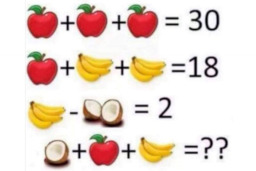
The Answer 42
Since we have no way to understand any of the princesses' answers, we cannot refer to them in questions. Knowing only one word (“yes” or “no”) would be enough. However, what little information we DO have gives us a decent place to start.
Before asking questions, we have only one piece of information—the princesses speak following a language. Logically, “yes” and “no” must sound completely different in whatever language this is. We can exploit this by structuring our questions in a certain way. First, we use embedded questions, and second, we need to establish some method of telling the answers apart as we ask. In this case, let's sort the answers of yes and no in whatever follows the alphabetical order of whatever language these princesses currently speak in.
First, in order to eliminate any ambiguity with our questions' answers, we need to use the first question to positively identify one princess we know definitely isn't Random. From there, we ask that princess the second question, depending on the outcome of the first.
Start by asking the princess on the left: "If I were to ask this question to the middle princess instead of you, asking about you instead of her, is there a chance she would answer with the word meaning 'yes' if and only if the word meaning 'yes' comes alphabetically before the word meaning 'no' in your language?"
This results in one of 4 outcomes:
- If the left princess is Random, she will give some random answer.
- If the middle princess is Random, then there is indeed a 50% chance she will answer yes, so if the left princess is True she will truthfully reply with the word meaning yes (if it does come first alphabetically), or no (if it comes second alphabetically). Either way, you can be sure that she'll answer with whatever comes first alphabetically in their language.
- Using similar logic, if the left princess is False and the middle Princess is Random, then the answer will be second when sorted alphabetically.
- If the right princess is random, the paradoxical question will cause the left princess to drop unconscious.
If the left princess drops unconscious:
We now know the middle princess isn't random. We therefore simply ask the middle princess "Will you answer this question with the word that means no in your language?"
If the middle princess is true, then the paradoxical question will make HER drop unconscious too. We can now sort the order as False, True, Random.
Or if she's false, she'll answer with whatever answer she wants, and it will be a lie no matter what. Therefore the order is True, False, Random.
If the left princess doesn't drop unconscious:
This is trickier, as there are three different possibilities as to why the left princess answered. However, we do at least know the RIGHT princess isn't random, no matter what answer we got. So we now ask the princess on the right the following (rather long-winded) question:
"Is it the case that either:
1. the left princess is Random and the statement '*answer left princess gave* means yes if and only if you will respond to this question with the same answer OR you are True'
2. the middle princess is Random AND the word meaning yes comes before the word meaning no when sorted alphabetically in your language?"
Now, one of four things happens:
- If the left princess is random and the right princess is true, then the question can basically be simplified as "Does the answer to the first question mean yes in your language?" So the right princess would truthfully reply with the same answer as the first question: yes. So we now know the order to be Random, False, True.
- If the left princess is random and the right princess is false, then the question can be simplified as "Does the previous question's answer mean 'yes' if and only if you will give the same answer to this question?" i.e "Will you answer this question with the word that means yes?" A false princess can't answer this question, so she drops unconscious. That means the order must be Random, True, False.
- If the left princess is true and the right princess is false, then we default to case 2 for this question, basically simplifying it as "does the word meaning yes come before the word meaning no when sorted alphabetically in your language?". As left and right are True and False: polar opposites, then you're going to get the opposite answer of whatever answer you got to the first question. But the left princess already effectively answered this question before, which allows you to have both answers in hand, as well as where they come alphabetically in their language. Score! So if left is true and right is false, then the answer you get is second alphabetically, so the order must be True, Random, False.
- If the left princess is false and the right princess is true, then the answer is whatever's first alphabetically, so the order is False, Random, True.










I consider myself pretty good at these sorts of things, but I cannot figure out how that first sentence works.
So no more riddles?
Or is there a part 3 coming out?
9735973
I didn't mean a crosswind, but something like an updraft. If she spends less energy flying against the gravity, she can spend more energy flying forwards. Any vertical wind will benefit her in both parts of the trip.